5+1 abandoned buildings in Hungary you must see
Abandoned buildings possess a strange, almost mystical atmosphere. They are the remnants of bold dreams and ambitious plans, most of which were never completed due to financial or political reasons. These structures often crumble and slowly fall into disrepair. There are countless unfinished or abandoned buildings in Hungary that deserve a better fate. Architectural storyteller Dávid Zubreczki has compiled a collection of such structures for the new season of National Geographic’s “Abandoned Buildings” series.
Read the article in Hungarian on Helló Magyar: Elhagyott épületek Magyarországon: 5+1 roskadozó építmény, amit egyszer látnod kell
Hungarian Holy Land Church, Budapest
The gigantic torso of the Hungarian Church of the Holy Land (Magyar Szentföld-templom) in Veszprém has been abandoned for years in Buda. Designer Farkas Molnár envisioned a unique building – a massive space covered by an elliptical dome and surrounded by structures inspired by the chapels of the Holy Land. Construction began in 1940 but was halted by the war, and the architect passed away in 1945. The Communist regime halted further work in 1949. Later, the unfinished building was converted into a warehouse for the Municipal Archives, with many parts dismantled and destroyed.
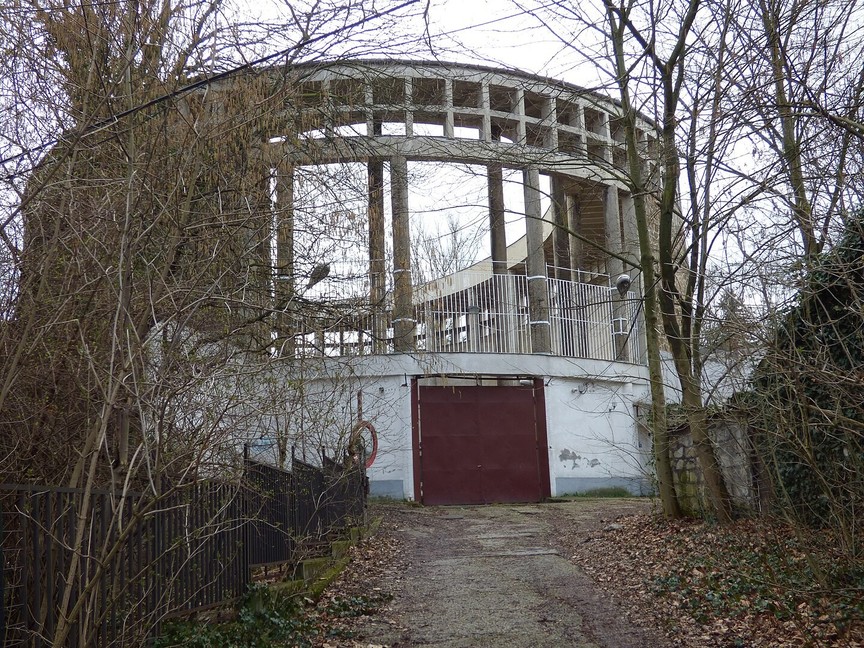
Today, the slender concrete columns and the oval ring that circles the top remain dominant features. Although the Franciscan Order now owns the structure and ideas for its reuse surface regularly, its future remains uncertain.
Pogánytorony, Budapest
This curious structure is located at the end of Pogánytorony Street, named after it, on the Golden Hill in Budapest. It stands on private land, half-restored. There is perhaps no other tower in Budapest with such an unusual purpose. The hexagonal structure was erected by the Turanists in 1935 as a cultic site for what they believed to be an ancient Hungarian religion.
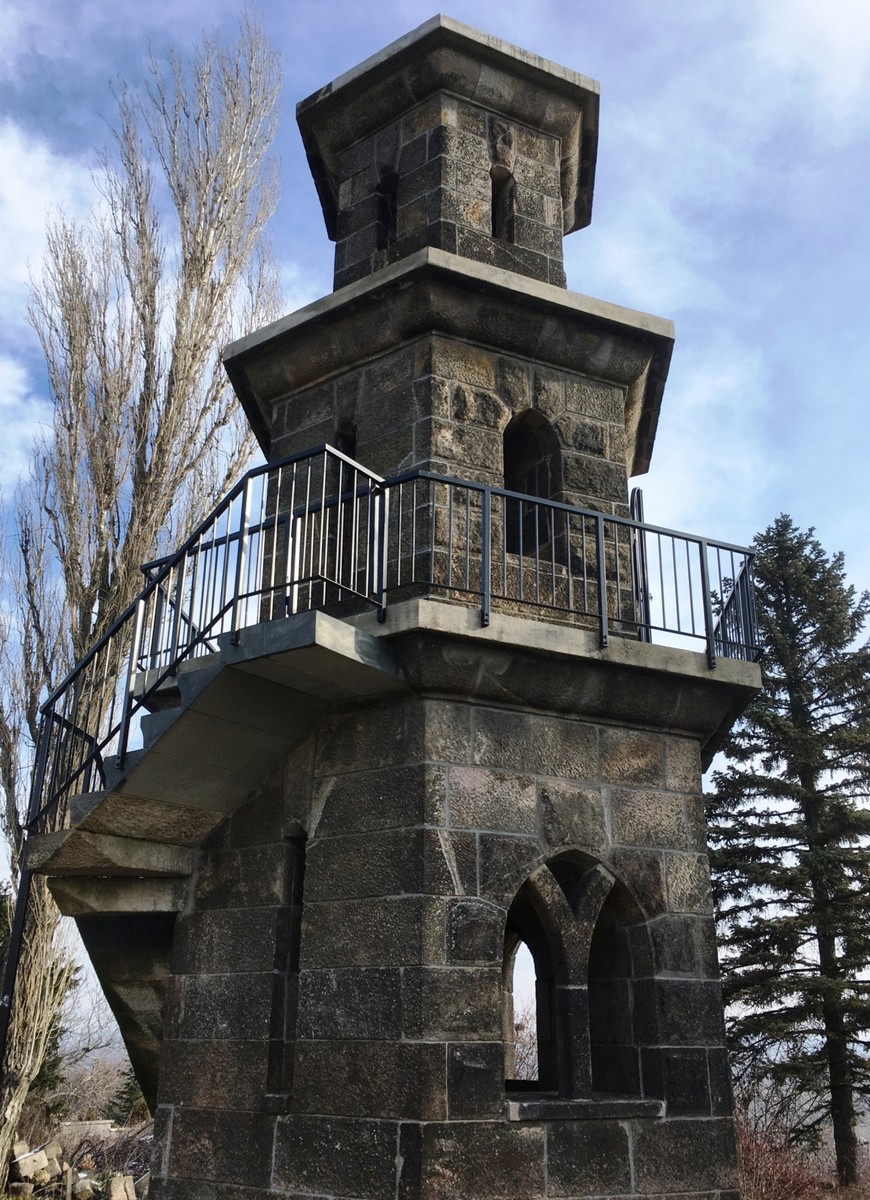
However, the Horthy regime did not look favourably upon the anti-Christian society, and it was banned in 1942. After the war, the abandoned building was used as an anti-aircraft observation tower, and following 1956, it reverted to private ownership. Today, its status is somewhat controversial: the municipality wishes to develop it as a tourist destination, but no agreement has yet been reached with the owner.
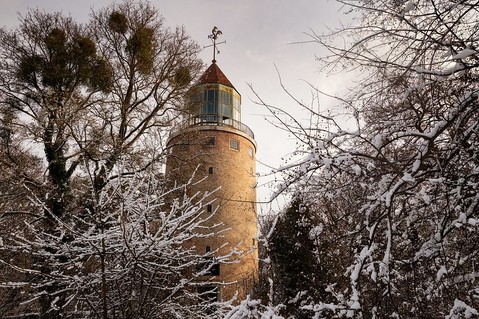
Gödöllő University Water Tower, Gödöllő
Although designed in the 1950s, its style is less reminiscent of “socreal” and more akin to northern European lighthouses. This is unsurprising as its architect, György Jánossy, studied in Denmark. The building was intended to function as a water tower, observatory, meteorological station, and lookout. At one time, it was thought to be the largest sundial in Europe.
The tower’s shadow was meant to cast across the lines of its fence, and alongside it, sculptors Géza Nagy and László Molnár carved the 12 signs of the zodiac, which would have told the time. Despite the care and precision with which it was built, the water tower never operated. By the time it was completed, it was no longer needed. Fortunately, this nationally protected industrial monument has not been abandoned, but to this day, no suitable function has been found for it.
Gyöngyös Synagogue, Gyöngyös

The tragic events of the twentieth century left Hungary with many empty synagogues, the largest of which is the Gyöngyös Synagogue, designed by the renowned Jewish architect Lipót Baumhorn. This vast building, completed in 1930, could seat 1,100 people. However, after the deportations, the town’s Jewish population had dwindled, and by the late 1950s, the state took control of the building. For many in Gyöngyös, the synagogue is still remembered as “the most beautiful furniture store in the country”, its last function before abandonment.
The synagogue has been vacant for many years, and while its renovation has been frequently discussed, it remains a difficult task. This summer, however, a small step forward was taken: 42 waste containers were reportedly removed from the site.
Read also: Abandoned for eternity: 5 spooky places in Hungary – PHOTOS, VIDEOS
Karancs Hotel, Salgótarján
Among the hotels in the city, Karancs Hotel in Salgótarján is perhaps the most iconic. Built in 1964, it was the first modern structure in the county seat. Its facilities and services rivalled those of hotels in the capital and around Lake Balaton, offering a bar, restaurant, and café. Its rooftop boasted a vast sun terrace with showers, which doubled as an open-air cinema in the evenings. The hotel’s brutalist raw concrete façade was unique in the country, and its interior featured a wealth of artistic works, including large ceramic mosaics, aluminium reliefs, and stained-glass windows.
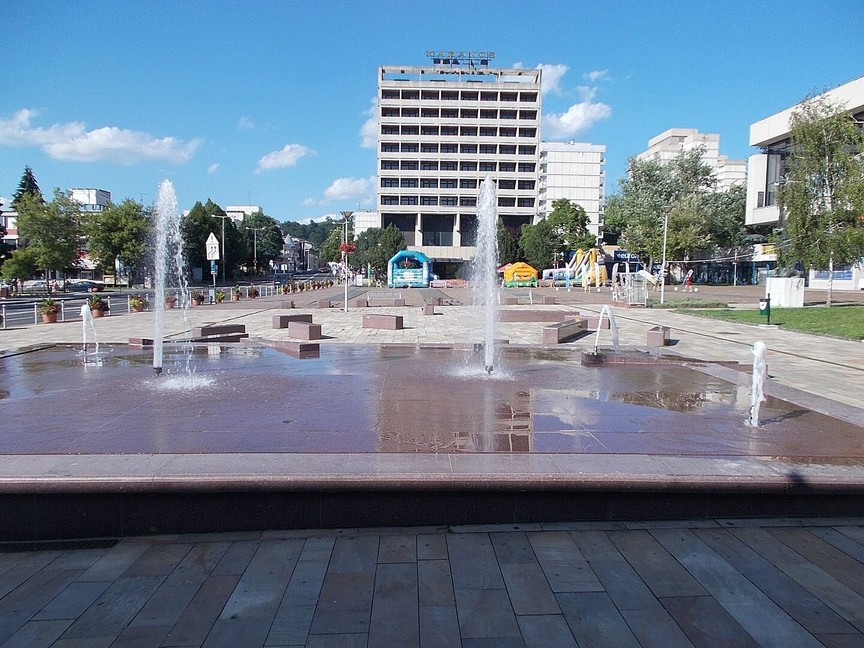
The hotel fell into decline after the regime change. While shops still operate on the ground floor, its 84 rooms have stood empty for over two decades.
+1 Pagoda, Mátra
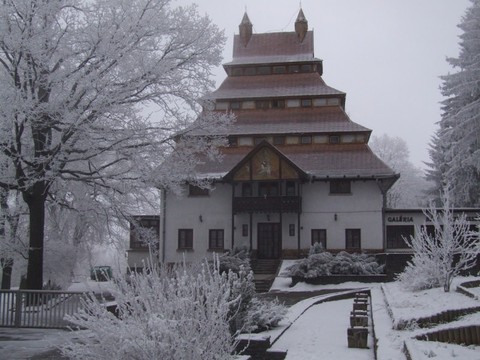
Far from any town, the “Mátra Association’s Kékesalja Lodge”, known to hikers as the Pagoda of Mátra, is a well-known haunted house. Its name (the “Mátra House”) has since become its symbol. Unsurprisingly, its design follows the popular form of East Asian Buddhist architecture. Designer István Medgyaszay sought to revive Hungarian architectural traditions by incorporating oriental motifs.
Beneath its ancient form lay a modern interior, a true “luxury tourist house” complete with hot and cold running water, a kitchen, electricity, a telephone, and a radio.
The architect even designed a darkroom for hikers to develop their photos. Despite its popularity in both summer and winter, the site closed after the turn of the millennium. Since then, fans of organic architecture and lovers of the Mátra have been waiting in vain for it to reopen.
Series: abandoned buildings in Hungary on Nat Geo
Across the world, there are many impressive architectural projects that, when successful, astound viewers, please users, and make designers and builders wealthy. However, some projects fail due to funding issues or political circumstances, leaving them abandoned and scarring their surroundings.
The 10th season of Abandoned Buildings explores stories behind these failed ventures, from Italian mafia rackets to American conspiracy theories, Croatian ghost towns, and Soviet propaganda sites. The series airs every Thursday at 9:00 pm on National Geographic.
Read also: Watch: green Trabant drives on railway tracks – VIDEO





